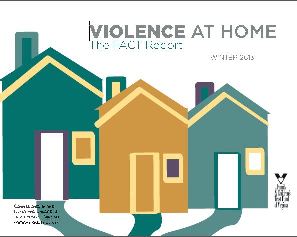Resources Library: Courts
Start a Search:
Technology Safety Planning with Survivors
Technology has a major impact on survivors of abuse. It can be used by a survivor to access help, to strategically maintain safety and privacy, and to remain connected to family and friends. It is often used to prove guilt and hold offenders accountable. Yet, technology, in its various forms, is also misused by abusers and perpetrators in crimes of domestic violence, sexual assault, stalking, and trafficking. The National Network to End Domestic Violence has developed Technology Safety Planning with Survivors to address how technology impacts the safety, privacy, accessibility, and civil rights of victims.
The State of Violence in Lesbian, Gay, Bisexual, Transgender, and Queer Communities of Virginia
Report of a 10-month study completead in 2008 and conducted by the Virginia Anti-Violence Project. The study included a survey of 1,000 individuals who identified as LGBTQ Virginians and addressed their experiences of sexual, intimate partner, and hate violence. They study also included a questionnaire for sexual and domestic violence agencies and LGBTQ service organizations regarding the services they offer LGBTQ individuals experiencing violence. 59 pages, includes survey and questionnaire.
Understanding Protective Orders in Virginia: What you need to know

This video, “Understanding Protective Orders in Virginia: What you need to know” is a useful resource for anyone with a family abuse protective order in Virginia. This video aims to make information about protective orders more accessible to both petitioners (individuals seeking to be protected) and respondents (individuals who the protective order is filed against). It explains definitions, conditions, and Virginia law related to protective orders in plain language and is available in English (with or without captions) Spanish.
NOTE: This video was created in July 2020 and state and federal law may have changed. The video was created as a project of the Pulaski Juvenile and Domestic Relations District Court Domestic Violence Docket with funded in part by a V-STOP award #15-M4161VA14 and #20-Q4161 VA-19 awarded to the Office of the Executive Secretary of the Supreme Court of Virginia from funds authorized by the federal Violence Against Women Act awarded to Virginia by the U.S. Department of Justice. Opinions or points of view expressed do not necessarily represent those of DCJS, OES, or the U.S. Dept. of Justice.
Click here to view the video in ENGLISH.
Click here to view the video in ENGLISH with captions.
Haga clic aquí para ver el video en español.
Violence At Home—The FACT Report 2013

The FACT Report presents three types of indicators to communicate factors relevant to family violence in Virginia:
- community context in which family violence develops;
- scope of family violence experienced by individuals; and
- capacity of the community to respond to family violence.
Violence at Home: The FACT Report 2014
When the first Violence at Home: The FACT Report was published in 2010, information about the extent of family violence in Virginia was scattered across state agencies, often divided by the age of the
victim or the nature of the crime. The FACT Report pulled this data into one document in an easy-to-understand format. The 2014 FACT Report is now taking this mission, to provide a comprehensive view of family violence in Virginia, a step further through the creation of a dynamic, online web portal. The portal includes 18 indicators of family violence, spanning 8 years of data for many of these measures, and presents them in an interactive report format. The information contained in this publication will highlight trends and recommendations. The full data tables that were previously located in the FACT Report and Report Appendix are now found online at: http://www.fact.virginia.gov/family-violence-indicator-locality-data-tool. To ease in the transition away from the print publication to an online data portal, this year’s FACT Report will also include report examples. Full step-by-step instructions for creating these reports can be found online at: http://www.fact.virginia.gov/step-by-step.

